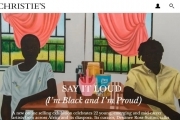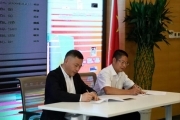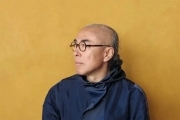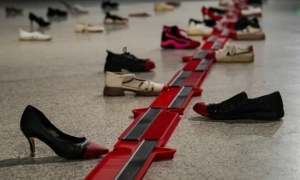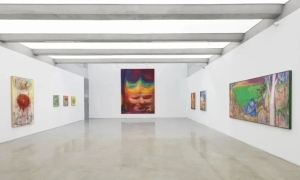汪建伟,《隔离》
关于“隔离”
我们在本雅明的《拱廊计划》研究的条目中,看到了他对马克思关于自然与知识的记载:
N16.4“……马克思从一开始就是从社会范畴上认识自然的,物质自然并不直接进入世界历史;相反,它是作为一种正在进行的物质生产过程而间接进入世界历史的,这个过程从最初就不仅是人与自然,也是人与人之间的关系。
……
一切人类活动所预设的纯自然无处不被作为物质生产的自然所替代,即被人类的社会活动所中介并转换的一种社会“物质”所替代,因此,也就能够在现在或未来被进一步改造和修正。”
《模型》
塔特林(Tatlin)从接受第三共产国际的委托,到“第三共产国际纪念碑”的诞生,至今已经九十年(1919.10—2009.9),这个关于人类未来理想的方案,一直保持在模型的位置。它包括强烈的政治学隐喻、实用主义功能以及对于新型生产关系的想像,同时政治诉求被严格的分配到所有人造的技术指标、功能作用以及尺度(303米的高度指向将超过作为资本主义象征的埃菲尔铁塔)之中。
这个理想模型的另一个重要信息是希望建立起一种可以超越资本主义生产方式的共产主义政治理想与工业化生产有机结合的模式,并强调了新的生产方式的政治正确性。
《生产》
中国在整个五十年代的社会主义建设中,以“经济、适用,在可能的条件下注重美观(周恩来)”为指导原则,某种程度上延续了“第三共产国际纪念碑”的政治理想,他们被整合为文化革命与艺术生产所共享的新秩序,现实被缝合在缜密的生产方式以及实用功能的统一体。它们呈现了几个基本特征:适合简单的,同时标准化的生产模式;降低生产成本,使产品保持在很均质化的状态以保证使用者在最大限度的平等,从而使差异降低到忽略不记,使技术有可能产生的特殊性消失;以及产品所关联的过程标准化,生产、运输、储存、使用变得尽可能的节约。
《实践》
《隔离》的基本材料全部来自于回收的旧家具,所有家具有明确的时间性,制作日期都是在五十至八十年代,它们既有别于中国传统制造工艺,又隔绝于当代制造工业,成为某种特定生产关系和生产方式的历史承载,以及我们的日常生活经验如何被转化为意识形态物质化的过程记录。
这些意识形态的建构被分配在功能与使用,它保证了生产方式与生产关系的一致,产品的功能决定了意识的范围,同时,身体在使用过程中被同质化。
《方法》
《隔离》也可以被理解为另一种方式的建立,事物原有的秩序被部分解除,同时又部分的保留,包括它们的物质属性和功能,它们被不同的描述方式重新组织,与其它的事物发生新的联系,在互相矛盾中共享彼此的差异,并发展为新的物质与功能的“有机体”。这既是我对于世界的一种看法,也是我对环境与自然的一种理解,即如何在一种关系、共享、重叠中去理解事物的态度。
《现场》
所谓整体应该保持在“散落”和“失序”的状态,坚持现场的非确定性,即“事件”的整体是建立在被不同的知识系统所描述的可能性,而不被完美的封闭在一种经验系统内。也许可以称之为对自然的拓扑学描述,不同的知识提供了对原有“事件”的“切割”性描述,使“事件”的整体性被破坏,既建立在某种秩序的唯一性受到质疑,同时,它使被质疑的部分成为了不确定的因素。
汪建伟
周伟,自然生态_1
“自然生态”
高仿真植物即人造植物,是利用现代工业材料模仿自然生长的鲜花、盆栽花卉、观叶植物、庭院花卉、绿化苗木、观赏树木、草坪等制成的仿真产品,并以其独特的景观价值成为美化人们生活、绿化环境的重要组成部分。仿真植物不仅能长久保持鲜丽,更能让消费者根据季节和需求随心所欲。仿真植物用料非常广泛,纱、麻、毛、木、涤纶、无纺布、纸、发纶、塑料等材料都可以作原材料。
经过近30年的发展,我国仿真植物已发展为科技含量高、工艺水平高的行业。按照行业组织归纳,高仿真植物具有以下特点:1)可塑性强,绿色环保,人造花原料主要有:塑料制品、丝绸制品、涤纶制品,也有用树脂粘土调配制成的材料,此外还用到金属棒、玻璃管、吹塑纸、纤维丝、装饰纸、彩带,这些材料均无污染或污染很小。因材料的弹性大可配合特殊高度、形状的模型,并且可保常绿,突破真品的限制。形象逼真,生动活泼,完全能与种植的花草媲美。 2)受环境影响小,现在的公共场所、办公室大多采用空调,室内光线常常不充足,因此在室 内要种好一棵植物并不是一件容易的事,但人造花可轻易地达到此目的,人造花草的色泽,可长时期保持鲜艳四季如一,不会像种植的花草那样会衰败干枯。 3)维护简便,人造花的枝叶不发霉、不腐烂,不需浇水,不滋生蚊蝇;人造花草不需要人工进行培育,可省去浇水、修剪、冶虫等麻烦;人造花不必进行光合作用,更无孩童误食伤人的副作用,这非常适合家中有小孩老人而夫妻都上班的家庭。4)大多人造花草的价格不高,有的还大大低于真花真草,运输便利、搬运轻松:在需变更设计时,重新组合搭配,可变化不同的气氛。适合大众家庭美化环境,而且经久不衰。
仿真植物因满足了远离自然的人们对自然的亲和想象而日益受到都市人的喜爱。巨大的市场需求与巨大的经济利益的诱惑相互作用形成了系统、完整的人造植物产业生态链。参考资料显示,仿真植物产业在我国已进入成熟发展期,2004年以来国内仿真植物消费达年百亿元以上,2004年出口欧美等60多个国家仿真植物达600亿支(棵),2005--2008年,仿真植物生产及销售以年平均17.2%的速度增长,2009年在全球金融危机的影响下仍保持了10%的增速,成为地区
GDP增长及出口创汇的重要产业之一。行业市场分析预测,2010-2012年人造植物生产规模年均增速为18%以上,表现出强劲的发展潜力。
周伟
目前,我们正经历地球历史上第六次大规模生物灭绝。这也是唯一一次由人类活动,而非灾难,引起的大灭绝。平均每二十分钟,就有一种动植物毁于人类之手。按此速度,有人预计,一百年后世界上高达30%的动植物将不复存在。
《什么正在消逝?》将首先让人们认识到:大量的物种、生物多样性正在消失,我们不仅要记住那些已经失去的,更要保护极度濒危、可能灭绝的生物。除非我们有所作为,否则它们将一去不返。而保护的关键,在于将目光投向它们赖以生存的栖息地和生态系统。《什么正在消逝?》将高度注意全球范围内急速消失的生物群落。
然而仅仅近距离地关注这场物种消逝的危机还远远不够;正如我的其他艺术作品,它们让你注意到那些在不经意间失去的东西。我相信艺术常常会有与众不同的视物之道,从而引起人们更深层次的注意。《什么正在消逝?》将指引我们去寻访、发现不为人知的残酷现实:从种群数量规模的由丰渐少;从迁徙通道的消亡到因我们恶劣行为所致的全球范围内生态环境的恶化;从童年记忆中那熟悉的鸟鸣欢悦渐行渐远,到夜晚星空遥望不再。
“地方”到底意味着什么?如果我们视而不见,又怎能对其加以保护?《什么正在消逝?》将提出这些质疑,让面临威胁的虫鱼鸟兽广袤的海陆空迁徙通道统统纳入我们思考的范畴。这将为我们展现全球海洋以及水路环境的急剧恶化——过度捕捞是如何导致90%的大型海洋生物消失殆尽。《什么正在消逝?》让我们把整个河流体系看作一个地方,或者将非洲大平原上的迁徙通道作为一个系统——这些栖息地往往因为被归纳在人为地理区域范围之外而被忽略;同时,它关注导致物种灭绝的主要因素——刀耕火种的农业、不符合可持续发展规律的猎杀及捕捞行为、非本土物种的引进、栖息地的破坏,以及全球变暖:这些问题的解决要求我们抛却地缘政治的界限。
《什么正在消逝?》由引发人们关注正濒临灭绝的物种作为起点,同时告诉我们:面对如此局面,我们仍可有所作为。这个项目致力于给予人们希望,展现优秀的环保实践,并号召人们为亟待改变的地区贡献力量。
林璎
“Distance”
In The Arcades Project, Benjamin Walter cited Karl Marx’s concepts of nature and knowledge:
N16.4 “… then Marx conceives nature from the beginning in social categories. Physical nature does not enter directly into world history; rather, it enters indirectly, as a process of material production that goes on, from the earliest moment, not only between man and nature but also between man and man.
…
that pure nature presupposed by all human activity is replaced by nature as material production – that is, by a social ‘matter’ mediated and transformed through human social activity, and thus at the same time capable of further change and modification in the present and the future.”
“Model”
Though nine decades have passed since Vladimir Tatlin was commissioned by the Communist International and designed “Monument to the Third International” (1909.10 – 2009.9), this project about humanity’s idealistic future remains an architectural model. However, it contains deep political and pragmatic metaphors and the imagination of new production capabilities, acting as an artificial constitution with every detail of specification, function, and dimension penetrated by political aspiration and defiance; with a height of 303 meters it would have dwarfed the great symbol of capitalism, the Eiffel Tower.
The model embodied a desire to construct an organic combination of communist political ideals and industrialized production – a new means of production featuring political ideology– that would surpass that of capitalism.
“Production”
The socialist construction of China in the 1950’s was under the principles of “be economically viable first, take aesthetics into consideration if possible (Zhou Enlai)”, which to some extent continued the political idealism of “Monument to the Third International”. These principles were integrated into a shared new order of cultural revolution and art production, with reality being encapsulated in the rigid amalgamation of means of production and practical funtion. These principles had their own characteristics, they met the demand for a simple, standardized mode of production; lowered production cost, guarantying a highly homogeneous execution of products and maximized equality among users, while balancing the differences and dissolving the possibility for technological irregularities; while standardized processes relevant to the product, reduced expenses in sectors of production, transportation, storage, and utility.
“Practice”
“Distance” uses vintage reclaimed furniture as its material. All furnishings were specifically dated and manufactured during the 1950s to 1980s. The designs of this period are vastly distinguished from both Chinese traditional craftsmanship and modern manufacturing; they have become specific historical carriers of social relations and a means of production, marking how our daily life can be transferred into materialized ideologies.
The construction of these ideologies was distributed to function and utility, ensuring the consistence between both means, and relations of production. While the function determined the scope of ideology, the body was homogenized in the process of utility.
“Method”
“Distance” can be understood as another way of constructing: the original instructions, including material property and function, were either partially removed or maintained. They were re-organized using different methods of description to build new bonds with other substances. In doing so, they share with each other their contradictions and turn into a new “organism” of material and function. This means of production explains one of the ways I perceive the world and the natural environment: as an attitude of how to grasp the essence within the related, shared, and duplicated complexity.
“Site”
The so-called material integration should be kept in a scattered and chaotic state. To maintain on-site uncertainty means the integration of an “event” is established within a diverse set of knowledge systems, rather than flawlessly enclosed into a single type of experiential manifestation. It can be regarded as a topological description of nature: different knowledge could destroy an integral “event” by descriptively cutting it into fragments. Once the uniqueness of certain order is questioned, undetermined factors give way to ambiguity.
Wang Jianwei
“Natural System”
Artificial plants take up a considerably extensive fraction of our daily life and environment. They replicate the natural – individual and potted flowers, foliage, nursery and courtyard grown plants, made of modern industrial materials: muslin, linen, wool, wood, polyester, non-woven fabrics, paper and plastic; immortal and elastic, they withstand the most demanding of customers.
The last three decades have witnessed the soaring development of China’s artificial plants industry featuring high level of state of the art technology. According to their trade organization, artificial plants boast the following characteristics: 1) highly flexible and environment-friendly. Major sources of artificial plants are pollution-free or low pollution materials such as plastic, silk, polyester, a mixture of resin and clay, metal bar, glass tube, blow molding paper, cello silk, decorative paper, and colored ribbon. These materials are highly shapeable and colorfast, which contribute to the life-like quality of the product allowing it to rival its natural counterpart. 2) Well-adapted to the environment. It is not an easy task to grow natural plants, especially in urban cities given their insufficient sunlight resulting from a massing of buildings and the application of household appliances like air conditioners. On the contrary, artificial plants maintain their color and gloss, never fading from bloom. 3) Easy to maintain. Artificial plants are the best choice for working couples. They will never bother you with mold growth or decay; no need to water, trim or debug. They don’t require natural sunshine, and are much safer that natural flowers if put into a child’s mouth. 4) Inexpensive, easy to move and versatile. Most types of artificial plants are much cheaper than living flowers. They can be easily moved and recycled to fit any new atmosphere and decor.
Artificial plants have become increasingly popular in urban life as they fill a void within people eager to regain an intimacy with nature. Collective demands together with enormous profit margins have provoked the formation of a systematic artificial ecology industry. It is noted that this industry in China has already stepped into the maturity phase. Since 2004, the consumption of artificial plants has exceeded ten billion Yuan, with up to 60 billion plants exported to more than 60 countries in Europe and North America in 2004 alone, and the number has continued to increase by an average 17.2% every year between 2005 and 2008. In 2009, though facing a financial crisis worldwide, the increasing rate was maintained at 10%. The industry has become a significant contributor to the growth of regional GDP and export value. It is expected that the scale of production in this promising industry will grow at an annual average rate of over 18% from 2010 to 2012.
Zhou Wei
What is Missing?
Currently we are experiencing the sixth mass extinction in the planet’s history, and the only one to be caused not by a catastrophic event, but by the actions of a single species – mankind. On average, every 20 minutes a distinct living species of plant or animal disappears at the hands of mankind. At this rate, by some estimates, as much as 30 percent of the world’s animas and plants could be on a path to extinction in 100 years.
What is Missing? will first make one aware of this enormous loss of species and biodiversity that is presently occurring, chronicling not just specific species that have gone extinct, but focusing equal attention on the critically endangered species that will most likely disappear unless immediate action is taken. Crucial to this focus is the need to link those threatened species to the habitats and ecosystems that are vital to these species survival. What is Missing? will highlight the biomes that are rapidly disappearing throughout the world.
It will ask us to pay closer attention not just to this crisis in biodiversity loss, but like my other artworks will focus your attention on things that we have lost that we might not even be thinking about. I believe that Art, at times, can look at a subject differently, and in doing so can get people to pay closer attention. What is Missing? will focus attention on issues and things that people are not even aware are disappearing, from the sheer abundance of species to their scale, from the loss of migratory corridors to threatened ecosystems throughout the world that we are rapidly destroying, from the diminished sounds of songbirds that were so common in our childhood, to even the visibility of the stars at night.
What exactly is a place? And how can we protect it if we do not see it as existing? What is Missing? will pose these questions, challenging us to consider the air, land, and oceanic migratory corridors of birds, animals, and sea-life that are at risk. It will show us the alarming degradation of the world’s oceans and waterways – how over fishing has led to a 90% loss of large marine fish. What is Missing? will allow people to see an entire river system as a place, or the African Plains migratory corridors as a system – habitats that must be seen outside of man-made boundary zones. It will focus on the main causes of extinction – direct harvesting, non-sustainable hunting and fishing practices, the introduction f non-native species, habitat destruction, and especially global warming: problems that must be pondered in the absence of geopolitical boundaries.
Although it starts with making us aware of what we are losing, What is Missing? is equally focused on making us aware of what can be done to help. It is a project focused on giving us hope, highlighting conservation success stories as well as asking us to help specific areas in need.
Maya Lin
【编辑:海英】


